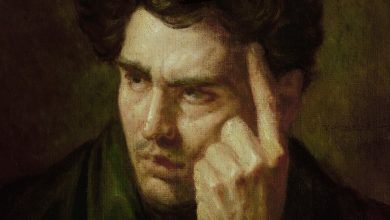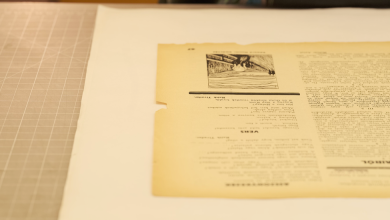Edmund White’s New Novel Is About a Husband’s Affair With Edmund White

A PREVIOUS LIFE
Another Posthumous Novel
By Edmund White
When a story is set decades in the future, it usually features disruptive technological advancements, dystopic states, out-of-control pandemics. That is, if civilization exists at all.
Edmund White’s new metafictional novel, “A Previous Life,” takes place mostly in 2050, and his future is very much like our present. Covid seems to have passed. People continue to connect on Facebook. Museums and theaters still exist, at least in the form of a London revival of Matthew Lopez’s 2018 play “The Inheritance.” Academics — yes, there is still academia — research and write intellectual works, among them, it turns out, a biography of White himself, even if “scholars have worked more on Sedaris.”
White — who is best known for 1982’s “A Boy’s Own Story,” and whose work has often mirrored his life — drifts in and out as a character in “A Previous Life.” Here he plays with the current trend of autofiction while the book’s characters and plot echo Arthur Schnitzler’s “La Ronde” and Choderlos de Laclos’s “Les Liaisons Dangereuses.”
White’s Marquise de Merteuil is Constance, an unsuccessful 30-year-old American writer. His Vicomte de Valmont: Ruggero, a 70-year-old Sicilian harpsichordist who calls his penis Bruce and has “always been the fittest, most attractive example of whatever age he was passing through.”
Ruggero and Constance are married, and “both agreed soon after they met never to talk about their past lives; transparency had destroyed their earlier marriages.” At the novel’s opening, Constance rethinks this plan. She wants their relationship to be deeper, more meaningful. She suggests they share their “confessions” in the form of explicitly detailed written diaries of their sexual pasts. (Cue de Laclos.) When Ruggero breaks his leg while heli-skiing in Switzerland, there’s no better time for the couple to cozy up in their chalet and orate from their respective memoirs.
Constance’s sexual history begins at 12, when she is abused by an older male guardian in Bowling Green, Ohio. At 14 in the shower, Ruggero admires the buttocks of his cousin Giuseppe, “soccer round, luminously white, the crack beckoning and furry and unsuspecting.” Soon, the two boys are experimenting with each other.
Through its scenes of twosomes and threesomes, homosexual and heterosexual, one would think Constance and Ruggero’s relationship is the novel’s real focus. But Constance is tortured by the shadow of a past dalliance Ruggero had 30 years prior with, yes, the author Edmund White, when Ruggero was 41 and White was 80. It first begins as a romantic meeting of the minds when Ruggero discovers White’s work and sends a fan letter. Their involvement becomes libidinous and then sadomasochistic until Ruggero leaves White, breaking the older man’s heart.
Ruggero seems to be a stand-in for White’s real-life chum Giuseppe Gullo, a Sicilian oncologist who plays the harpsichord and a “fan who became a loving friend.” In turn, sometimes “A Previous Life” reads like a fever dream of morning pages, an erotic diversion between the two that we have been invited to voyeuristically experience. White jumps from rhapsodies on Shostakovich to explications of intercourse with various synonyms for parts of the male anatomy. Of three “treasure trails” mentioned in the book, one is “generous.” Another is slender and silver. A third, despite “strong legs covered with gold dust,” is “paradoxically” not there at all.
Setting the book in 2050 enables White to express anxiety about his legacy, the fear of becoming “a writer no one’s ever heard of except for a few old queens.” That seems unlikely, especially considering the breadth of his canon, his sometimes-impenetrable scholarship and his immersion in the international community of thinkers. (When writing about White, it’s hard to avoid double entendres.) In 2019, he received the National Book Award’s Medal for Distinguished Contribution to American Letters.
Needless to say, through all of White’s travels, after everything he’s witnessed and surveying the wide range of his work, it’s heartening to know that, at 82, the writer still believes in love, passion and grappling with the endurance of storytelling. “The thrill of fiction,” White writes, somewhere between an aria about Sicilian virility and an allusion to ancient Rome, “is that it gives us the illusion that life is legible, character integral, cause and effect logical, love central and the pace breakneck.” Let’s hope it still exists in 30 years.




